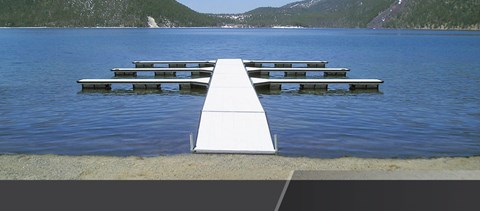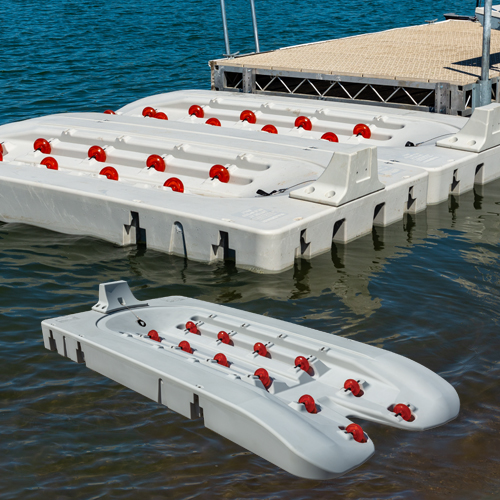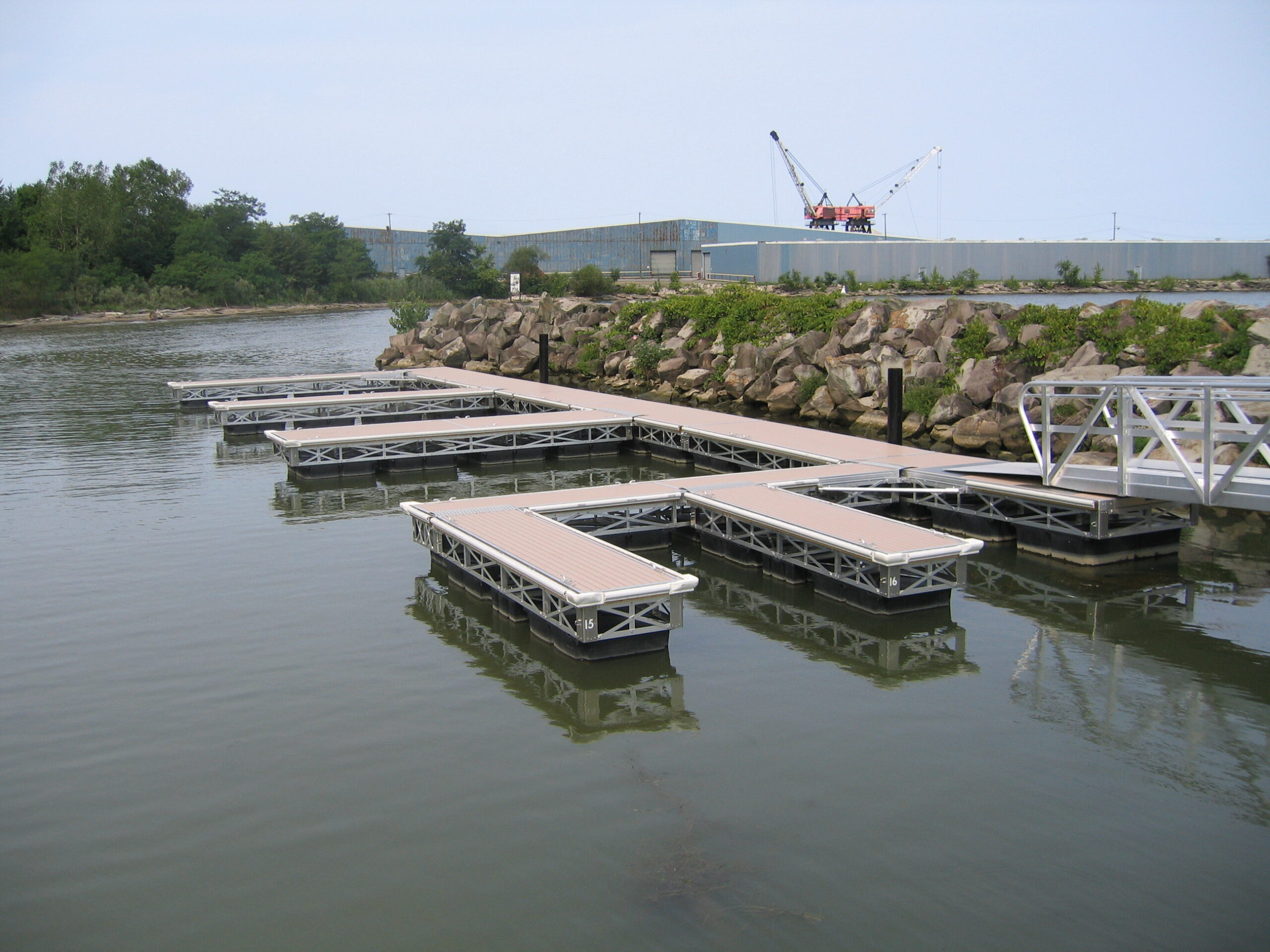Floating Docks: The Smart Choice for Modern Waterside Living and Recreation
Floating Docks: The Smart Choice for Modern Waterside Living and Recreation
Blog Article
Upgrade Your Waterside With Long Lasting Floating Docks
Updating your beachfront with long lasting floating docks can significantly improve both capability and aesthetic appeals, providing a versatile option for different water activities. These structures are made to adapt to rising and falling water levels, making certain safety and security and access throughout the periods. With a series of products available, including low-maintenance options and traditional timber, choosing the ideal dock can match your personal style and satisfy functional requirements. Nonetheless, comprehending the nuances of installment and upkeep is essential for making certain long life and performance. What variables should you consider when making this investment?
Benefits of Floating Docks
Floating docks deal a multitude of benefits that boost their charm for numerous maritime applications. Unlike typical set docks, floating docks increase and loss with the trend, making certain regular accessibility for boats and watercraft no matter of environmental conditions.
Furthermore, floating docks are easier to install and relocate, giving adaptability for short-lived or seasonal use. Their modular style enables personalization to fit specific demands, whether for exclusive marinas, household beachfronts, or business applications.
Moreover, floating docks produce minimal disturbance to the water environment, protecting neighborhood ecosystems and minimizing the likelihood of erosion. They also provide improved safety and security and stability for users, as their buoyant nature offers an extra forgiving surface area than inflexible structures.
Moreover, floating docks can promote a diverse series of tasks, such as angling, swimming, and leisure boating, making them a valuable asset for beachfront development. Their convenience and usefulness make floating docks a recommended option for a selection of maritime jobs.
Selecting the Right Materials
Selecting ideal materials for floating docks is crucial to their durability, performance, and total effectiveness. When choosing materials, consider factors such as environmental direct exposure, maintenance needs, and structural honesty. Common products include timber, plastic, aluminum, and composite choices, each offering unique advantages and downsides.
Timber, while aesthetically pleasing, requires routine maintenance to stop rot and decay. Pressure-treated wood can enhance toughness, yet it might still catch water damages over time. Plastic drifts, typically made from high-density polyethylene, are immune to corrosion and call for minimal upkeep, making them an eye-catching choice for low-maintenance applications.
Light weight aluminum is one more practical option, known for its toughness and lightweight residential properties. It is immune to corrosion and can hold up against severe climate condition, although it might be much more costly than various other materials. Compound materials integrate the most effective qualities of wood and plastic, offering a low-maintenance and resistant choice that imitates the look of wood without the linked disadvantages.
Eventually, the option of product should line up with the planned use, ecological considerations, and budget constraints, guaranteeing a useful and long lasting floating dock that meets your particular demands.
Installation Refine Summary
The successful setup of a drifting dock depends on mindful planning and click for more info execution, making sure that it runs effectively in its desired atmosphere. The initial step includes analyzing website problems, including water deepness, coastline features, and dominating climate patterns, which will notify the dock style and anchoring system.
Adhering to the website analysis, the next phase is to prepare the floating dock elements. This consists of constructing the frame, securing floats, and attaching any kind of necessary hardware. It is critical to guarantee that all links are durable and water-resistant to stand up to marine conditions.
Once the dock is constructed, the installment process starts with positioning the dock in the water. This can involve a crane or other lifting devices, especially for larger structures. Proper positioning is vital for performance and safety and security.

Maintenance Tips for Long Life
Normal upkeep is crucial for guaranteeing the longevity and optimum performance of a floating dock. To achieve this, begin with regular evaluations at the very least twice a year, focusing on the image source stability of the dock's framework, consisting of the flotation devices and linking hardware. Look for indicators of rust, wear, or damage, and attend to any kind of issues promptly to avoid further wear and tear.
Cleansing is one more essential element of upkeep. Remove debris, algae, and barnacles from the dock's surface to stop unsafe conditions and maintain visual allure. Use a mild detergent and a soft brush to prevent harming the dock's materials.
Additionally, make sure that the dock is appropriately secured and protected to withstand seasonal adjustments in water levels and climate condition. Examine the anchoring system for security and make changes as required.
Enhancing Your Outside Visual
To produce a visually appealing exterior area, including a floating dock can substantially enhance the general visual of your waterside property. Floating docks are not only practical but can also offer as a striking centerpiece that enhances the natural surroundings - floating dock builder. Available in different products and designs, these docks can be personalized to match your building's architectural style and landscape
The addition of ornamental aspects, such as incorporated lights or fashionable barriers, additionally boosts the dock's aesthetic allure. Consider utilizing all-natural wood surfaces, which mix effortlessly with the environment, or opting for modern-day materials like aluminum or composite outdoor decking that provide a smooth, contemporary look.
Tactically placing planters or seating areas on or around the dock can develop welcoming areas that urge leisure and pleasure of waterside views. Furthermore, including shades and appearances that balance with your landscape will create a natural see page aesthetic throughout your outdoor location.

Verdict

Upgrading your waterfront with sturdy floating docks can considerably boost both functionality and appearances, providing a flexible remedy for numerous water activities. Unlike typical fixed docks, floating docks rise and fall with the trend, ensuring constant ease of access for watercrafts and watercraft no matter of environmental problems.Choosing ideal materials for floating docks is crucial to their longevity, performance, and general effectiveness.Once the dock is constructed, the setup process starts with positioning the dock in the water.In summary, floating docks deal various benefits, consisting of adaptability to water level modifications and a selection of material alternatives.
Report this page